This week, people will be raising a toast to Scotland’s greatest poet. They will hold celebrations not just in Scotland but around the world. In preparation for Burns Night, we take a look at the celebration’s namesake and explore exactly what a Burns Supper entails.
What and When is Burns Night?
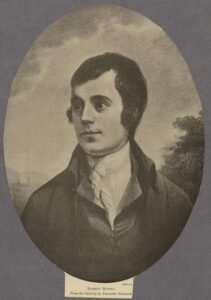
Burns Night commemorates the birthday of Robert “Rabbie” Burns, the Scottish poet. He was born on 25 January, 1759. More than 250 years later, the occasion is still marked with food, drink, poetry, and merriment. Coming as it does in the middle of the cold winter months, it is a welcome evening of warmth when Christmas has started to fade from memory.
Who was Robert Burns?
Chances are you’ve gathered to sing “Auld Lang Syne” on New Year’s Eve more than once. If so, you can thank Robert Burns. He was the poet behind the famous song. But who was he and what else did he write?
Robert Burns was born on 25 January, 1759 near Alloway, Ayrshire. The National Trust for Scotland maintains the cottage where he was born as part of the Robert Burns Birthplace Museum. He was the eldest of seven children born to William and Agnes, both tenant farmers. Much of his childhood was spent in poverty. However, William was self-taught and encouraged literacy and education in his children. He taught Robert a range of subjects, including reading, maths, and history. Later, Robert would also study Latin and French with a tutor.

At the age of 15, Rabbie wrote his first poem. The following year, he was sent to Kirkoswald to study. As tenant farmers, the Burns family were often moving from one farm to the next. After William’s death in 1784, Robert and his brother Gilbert struggled to keep the farm going. Eventually, Robert was offered the chance to Jamaica to work on a plantation. Gilbert suggested he publish some of his poems to raise funds for his fare. However, a favorable response to his poems and fatherhood meant that the young poet would move to Edinburgh instead of Jamaica.
Over the next decade, he would live in Dumfriesshire as a farmer and exciseman, while strengthening his reputation as a writer. Burns married once, to Jean Armour in 1788. They had nine children but only three survived past childhood. However, he was something of a womanizer, having affairs and fathering children with several other women.
Burns died in July 1796. He was 37. The cause of death may have been related to a heart condition and the physical toll of farm labour from such a young age.
Robert Burns was educated in English but wrote largely in Scottish dialect.
A Red, Red Rose
A Red, Red Rose
O my luve’s like a red, red rose,
That’s newly sprung in June:
O my luve’s like the melodie
That’s sweetly play’d in tune.As fair art thou, my bonny lass,
So deep in luve am I;
And I will luve thee still, my dear,
Till a’ the seas gang dry.Till a’ the seas gang dry, my dear,
And the rocks melt wi’ the sun
O I will luve thee still, my dear,
While the sands o’ life shall run:And fare thee weel, my only luve!
Robert Burns
And fare thee weel a while!
And I will come again, my luve,
Though it were ten thousand mile.
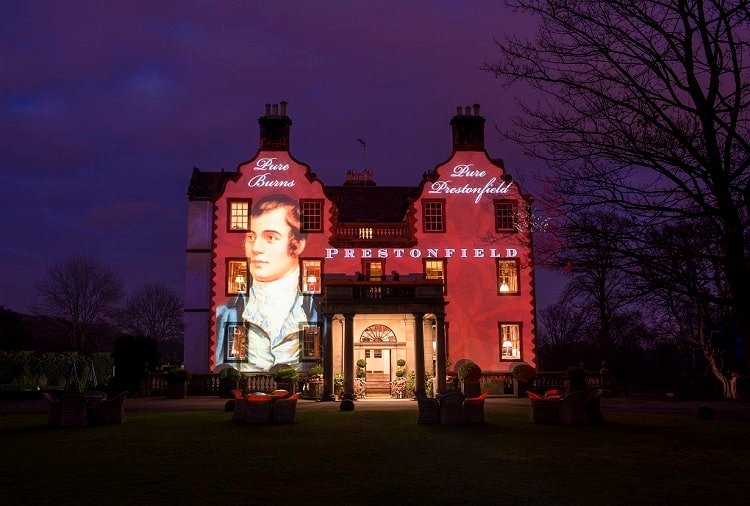
The Essentials of a Burns Supper
The first Burns Supper was held in 1801, on the fifth anniversary of the poet’s death, when a group of friends gathered at the family’s cottage to remember him. They ate haggis, recited his poetry, and gave a speech in his honour. A tradition was born with the following year’s supper being moved to January to mark his birth. Although most commonly held on Burns Night, a Burns Supper can be held at any time of year.
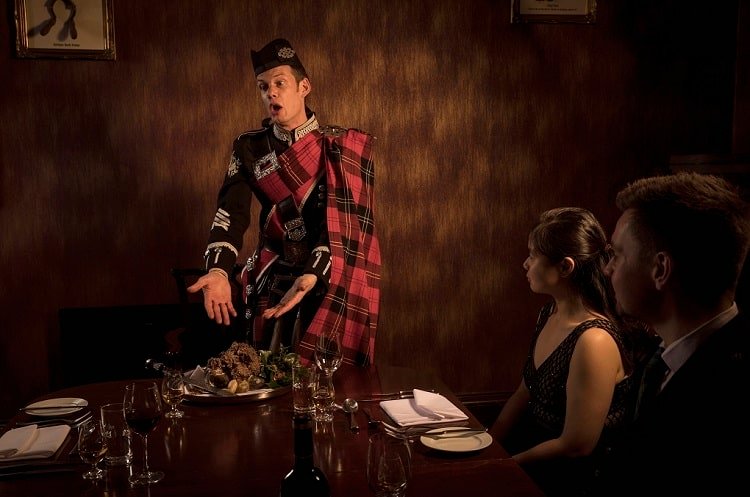
Modern Burns Suppers range from a casual gathering of friends to a highly formal event. Nevertheless, there are certain commonalities between the two. These include Scottish music, the serving of haggis, a toast (Scotch whisky, of course), and a reading of some of Burns’ poetry. One’s finest tartan is the preferred dress.
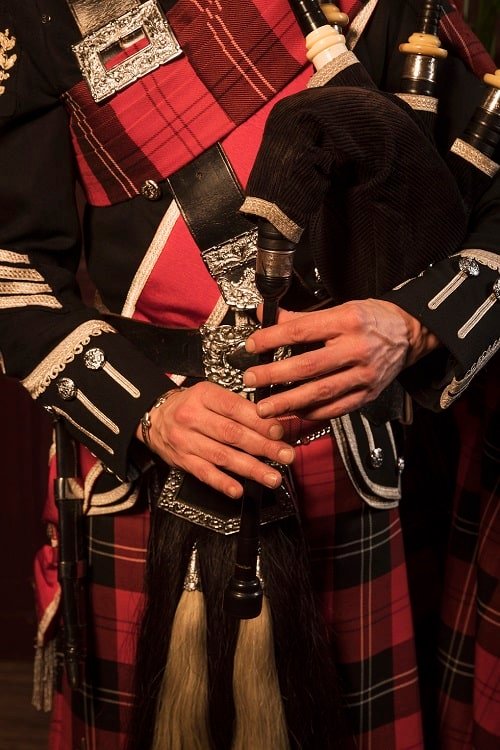
The more formal events tend to follow a strict order of ceremony. Guests are greeted by a bagpiper as they arrive. The host will welcome the guests and the “Selkirk Grace” is said. Although often attributed to Burns, it predated him as the “Galloway Grace”.
Some hae meat an canna eat,
And some wad eat that want it;
But we hae meat, and we can eat,
And sae the Lord be thankit.
Selkirk Grace
Next comes the meal. More about that in the next section. After the meal, there is a speech about some aspect of Burns’ life and work, followed by a toast to his Immortal Memory. There may then follow a couple of light-hearted speeches. The Address to the Lassies concludes with a toast to the women present. The Reply to the Laddies offers a similar toast to the male guests.
A variety of poems may be read, ending with everyone singing “Auld Lang Syne”. That ends the formal part of the evening. A ceilidh often has people dancing into the night.
Tell Me About the Food

A formal Burns Supper might start with a soup course. This is usually cock-a-leekie, cullen skink, or another traditional Scottish recipe.
The main dish is haggis, served with neeps and tatties (mashed potatoes and turnips or swede). It arrives with great fanfare. The guests rise as a bagpiper pipes in the haggis, leading the cook who carries the dish on a large platter and presents it to the table. The host then recites the “Address to a Haggis”, a rather lengthy Burns ode to the national dish. At a certain point in the poem, the host slices the haggis open.
So you’ve heard of haggis but don’t know exactly what it is? Wonder no more. Burns called it the ‘great chieftain o’ the puddin’-race’. Haggis was born out of thrift, invention, and necessity. It consists of a number of parts of offal – lung, liver, and heart – chopped up and mixed with suet, onion, oatmeal, and spices. The mixture is then stuffed into a sheep’s stomach and cooked. To those unfamiliar with eating offal, the description can be a little off-putting. However, the resulting dish is rich and comforting. (Note: Do NOT buy something in a tin that claims to be haggis. You will be sorely disappointed at the insipid, tasteless imitation.) A vegetarian version, consisting of oats, lentils, beans, and vegetables is commonly available.
The dessert will also be traditional, perhaps a trifle, a Clootie Dumpling, or cranachan. Lots of whisky is available to wash it all down.
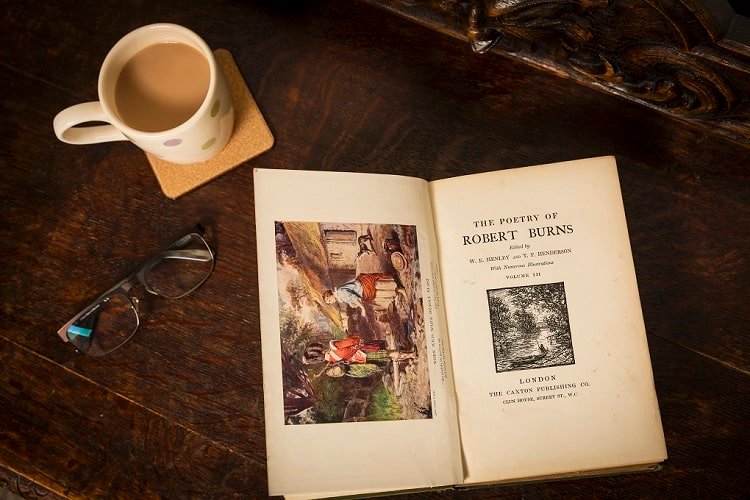
If you have the opportunity to attend a Burns Supper, you are in for a treat. It is a true celebration of Scottishness. And if you don’t have one nearby, and don’t have access to some haggis, you can at least mark Burns Night with a wee dram and some poetry.




One thought on “What You Need to Know About Celebrating Burns Night”
Comments are closed.